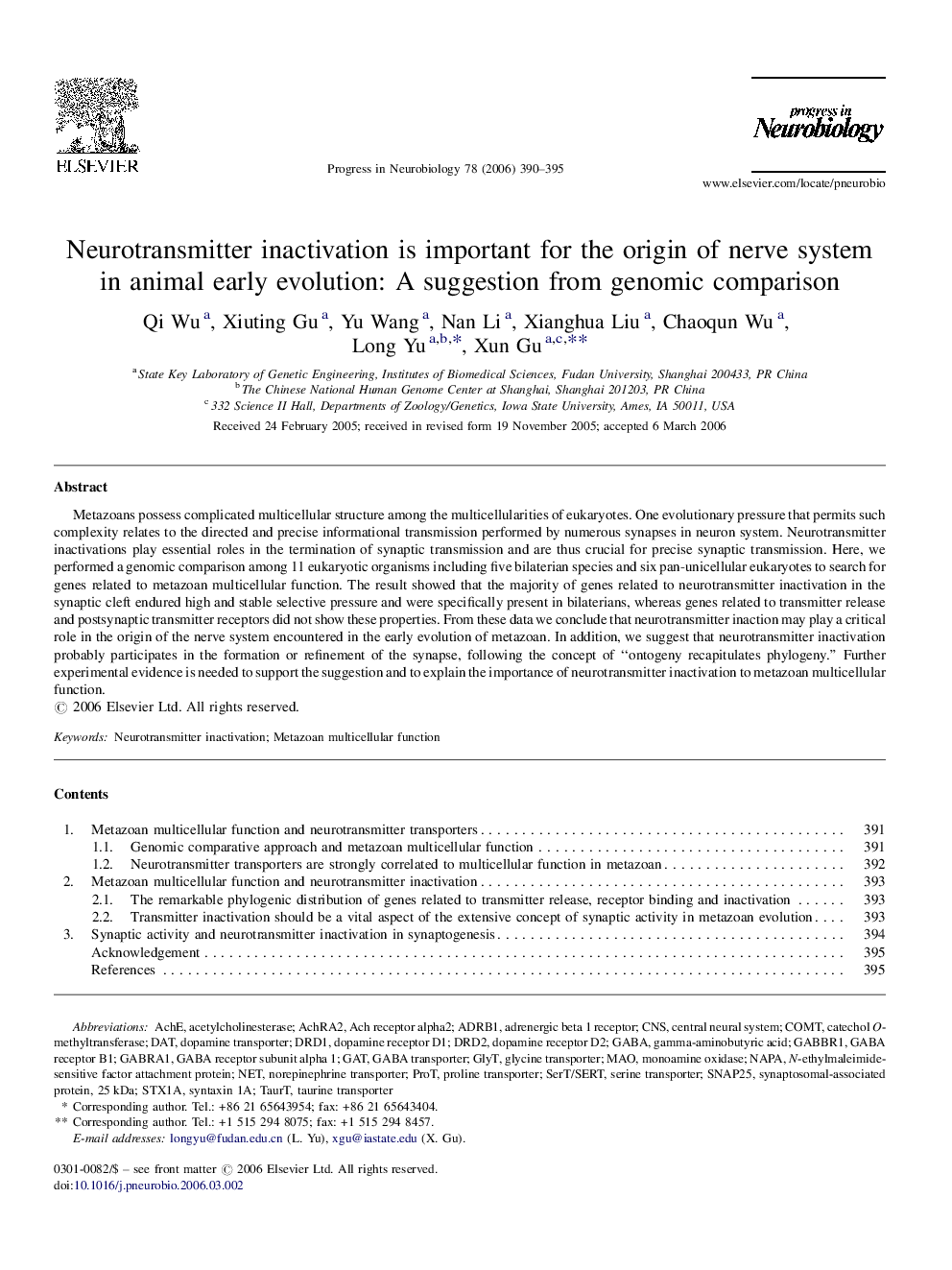| Article ID | Journal | Published Year | Pages | File Type |
|---|---|---|---|---|
| 4354021 | Progress in Neurobiology | 2006 | 6 Pages |
Metazoans possess complicated multicellular structure among the multicellularities of eukaryotes. One evolutionary pressure that permits such complexity relates to the directed and precise informational transmission performed by numerous synapses in neuron system. Neurotransmitter inactivations play essential roles in the termination of synaptic transmission and are thus crucial for precise synaptic transmission. Here, we performed a genomic comparison among 11 eukaryotic organisms including five bilaterian species and six pan-unicellular eukaryotes to search for genes related to metazoan multicellular function. The result showed that the majority of genes related to neurotransmitter inactivation in the synaptic cleft endured high and stable selective pressure and were specifically present in bilaterians, whereas genes related to transmitter release and postsynaptic transmitter receptors did not show these properties. From these data we conclude that neurotransmitter inaction may play a critical role in the origin of the nerve system encountered in the early evolution of metazoan. In addition, we suggest that neurotransmitter inactivation probably participates in the formation or refinement of the synapse, following the concept of “ontogeny recapitulates phylogeny.” Further experimental evidence is needed to support the suggestion and to explain the importance of neurotransmitter inactivation to metazoan multicellular function.
